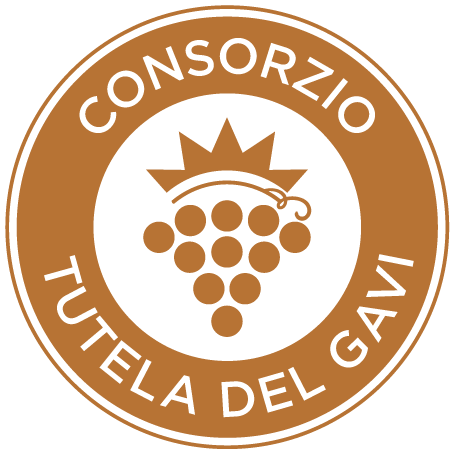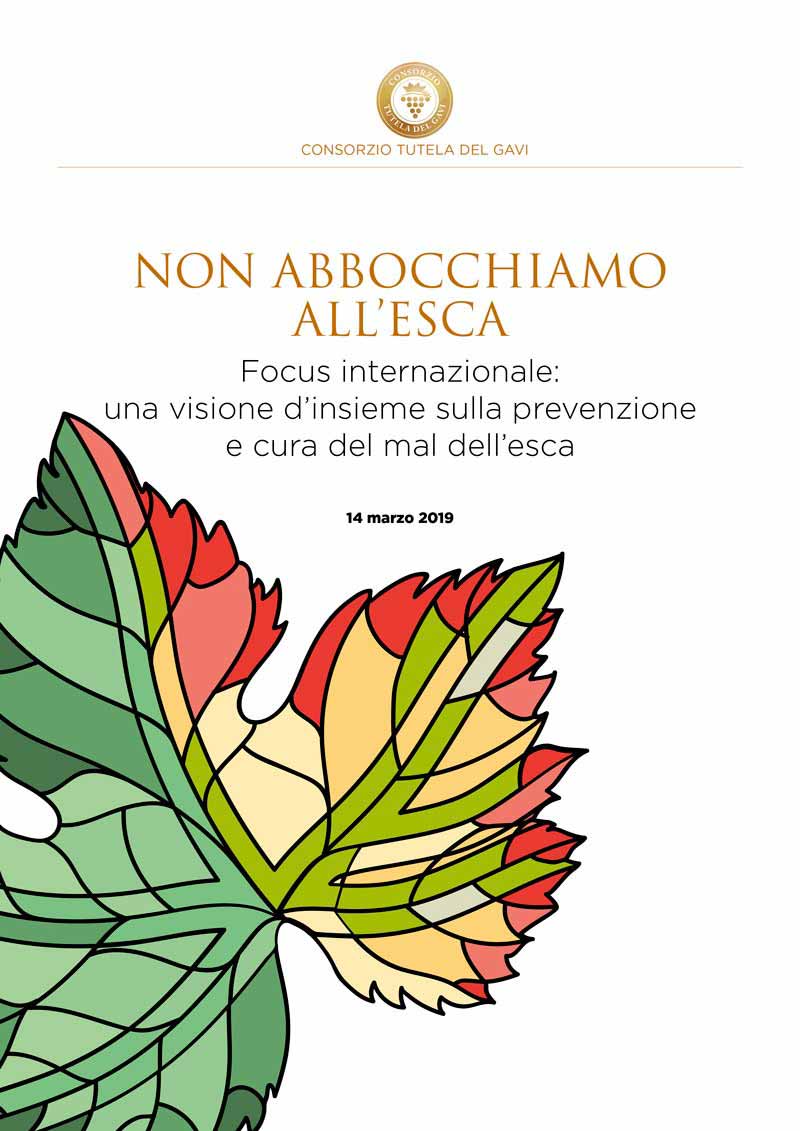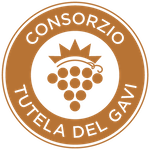Guyot training system, characteristic of quality viticulture, with average planting distances ranging from 2.40 to 2.60 meters between rows, and 0.90 to 1.20 meters between vines, with average investments of vines per hectare from 3,300 to 5.000, and such as to pursue the best and most rational arrangement on the surface of the vines, both to facilitate the execution of cultivation operations and to allow for the rational management of the canopy, making it possible to obtain an adequate well exposed leaf area and to contain wine production yields within the limits set by the specification (66.50 hl/ha for the basic type and 45.50 hl/ha for the Riserva types).
Viticulture
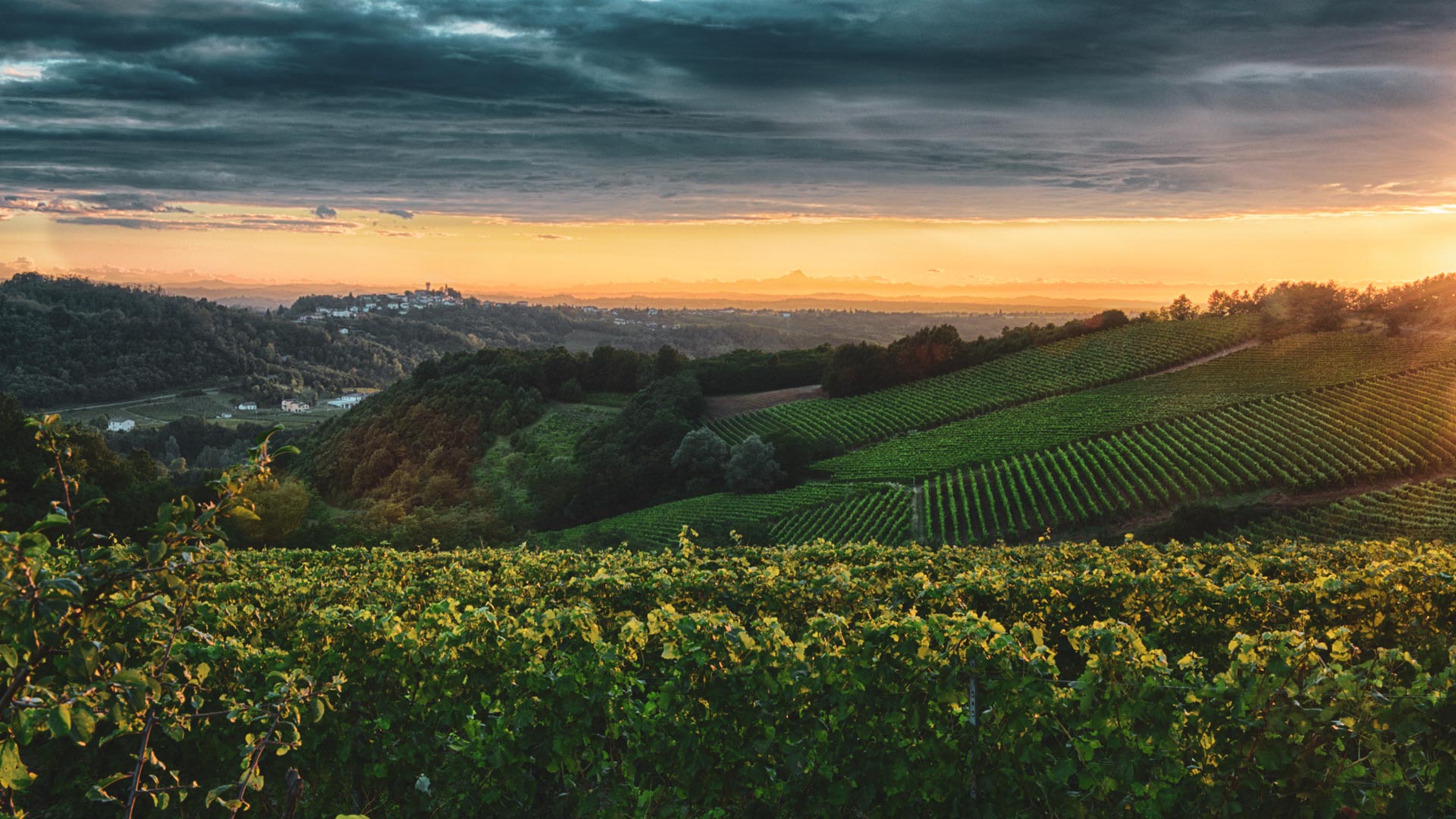
The Denomination
of Gavi docg
Gavi docg is traditionally produced from 100% cortese grapes, grown within a precise, mainly hilly geographical area of the southern belt of the province of Alessandria.
Forms of breeding,
the planting distances and pruning systems
Climate
The microclimate of the production area, characterized by abundant rainfall from October to April (619 mm.) , by hot and dry summers (minimum rainfall in July 38 mm.) tempered by the influence of winds from the sea and the mild temperature and excellent sunshine in September, allows the grapes to ripen fully contributing significantly to the particular organoleptic characteristics of Gavi Docg. The high temperature range between night and day that characterizes the last phase of the ripening of the grapes favors the exaltation of the aromas that characterize the typical bouquet of Gavi docg.
Protection and Sustainability
The technical activity of the Consortium for the Protection of Gavi involves various projects, both in the vineyard and in the winery: from clonal selection to thematic maps of the area (sunset, slope, altimetry and exposure) from the regulation of sprayers to the study on native yeasts. The projects have a clear purpose: to improve vineyard management techniques while respecting environmental sustainability and biodiversity, and to update winemaking practices in the cellar while respecting tradition. The Consortium's activity is aimed above all in the protection of the image of Gavi Docg in Italy and abroad, through the monitoring of industry sites.
Online protection: the activity involves monitoring Italian and international sites, aimed at protecting the image of Gavi Docg in Italy and abroad.
The Consortium also carries out yearly supervisory activities on all Gavi D.O. through checks carried out by supervisory agents at the marketing stage in order to ascertain that the protected production meets the requirements set out in the production regulations. A number of bottles of Gavi Docg on sale both in the G.D.O. (supermarkets and Hard Discount) and in the HO.RE.CA. sector. (wine shops) all over Italy: the wines taken are subjected to chemical-physical analysis and administrative checks on the compliance of the labels with the state mark. In case of irregularities, a report is made to the ICQRF - Central Inspectorate for the protection of quality and fraud repression of agri-food products.
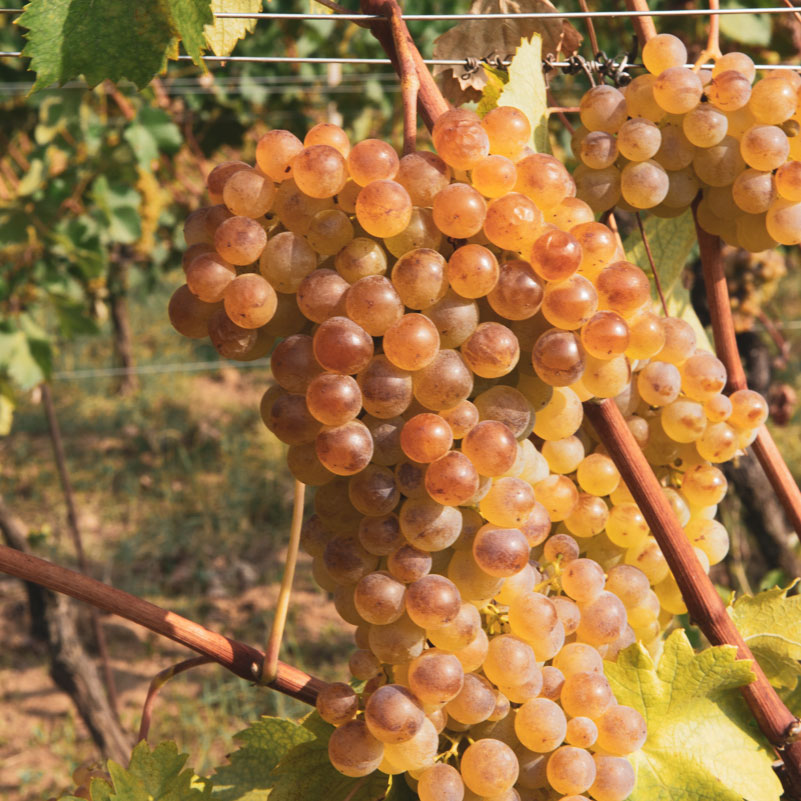
DRAFT
Golden Flavescence 2021
Since 2012, the Consortium for the Protection of Gavi has been coordinator of the Golden Flavescence Project, which involves producers (winegrowers and hobbyists, organic and traditionally managed vineyards), local institutions, OOPPAAs, the Province of Alessandria and the Piedmont Region.
The vineyards involved are progressively increasing for a total of 1,200 traps placed to monitor the Flavescenza dorata vector insect (Scafoideus titanus) and 7,800 plants monitored for the regional survey: the Consorzio Tutela del Gavi directly managed 840 traps and 5,250 plants, distributed in 35 vineyards.
The project involves monitoring the vineyards in June to identify the presence of juvenile forms of the vector insect and the subsequent placement of chromatographic traps until the end of October, to be replaced on a fortnightly basis to monitor the presence of adults.
Reading the juvenile forms is essential to know the developmental stage of the vector insect and set defense. Following the reading of the chromatotic traps by technicians, the most appropriate times for compulsory treatment with conventional insecticides are determined on a case-by-case basis, alerting all farms in the area on the timing and methods of intervention, with attention also given to honey operators.
Some uncultivated fields are also checked as possible sources of inoculum of the disease.
In the middle of August, the Consortium organizes the "Flavescenza day" dedicated to winegrowers: a long visit to a Gavi vineyard to recognize plants affected by Flavescenza dorata and/or mal dell'esca, so that the symptoms and various manifestations of the two diseases can be compared.
Winegrowers are taught how to distinguish between the different symptoms and stages of the two diseases and, most importantly, how to identify and manage diseased plants and implement the necessary good viticultural practice techniques: the removal of diseased plants and the use of chromatographic traps to detect the insect
The Consortium provides local awareness and information, with the organization of a public debate in April to present the progress of the project to the area; in addition, during the course of the viticultural season, periodic technical releases are made and posters are put up in public places, bearing information on the strategies, timing and methods of control.
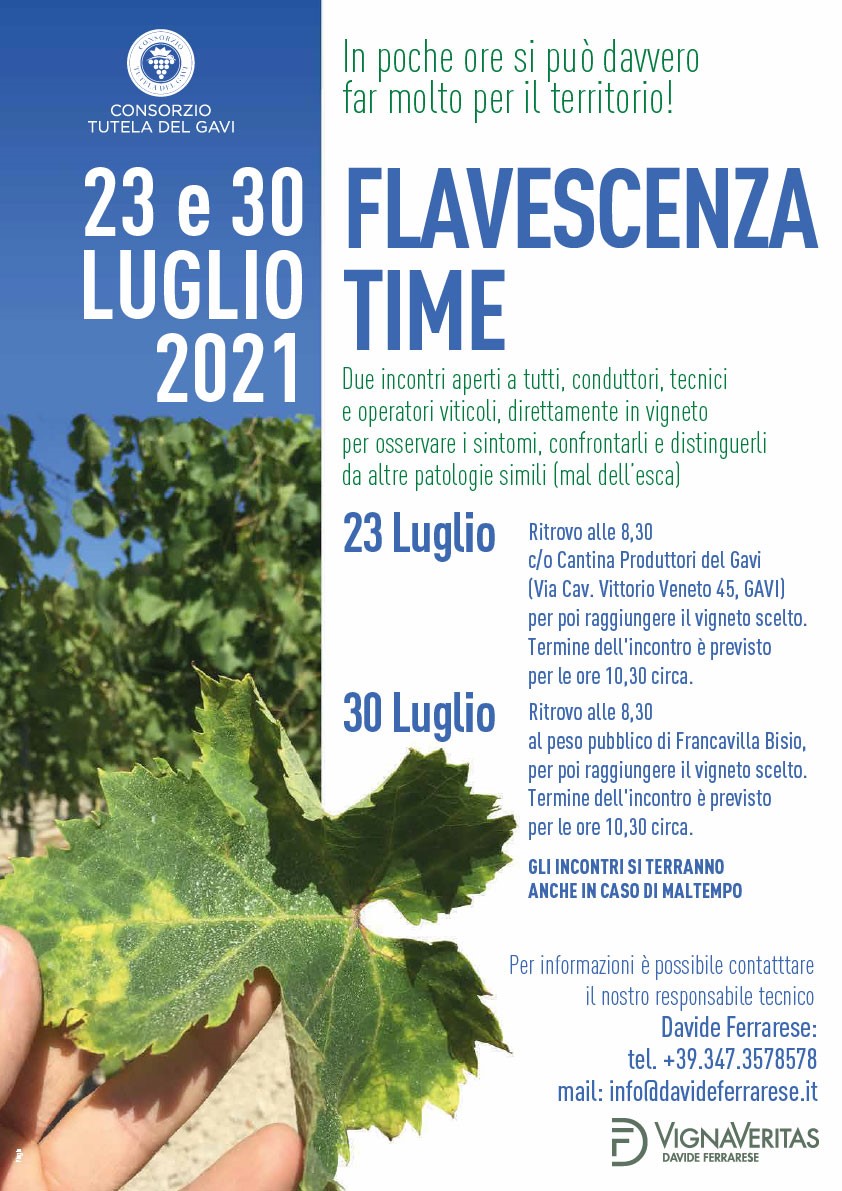
DRAFT
Let's not take the bait 2019
The topic is esca disease: not a single disease, but a series of pathogens that afflict the vine plant at different times and in different ways. They are in fact better defined in the plural as wood diseases and pose a serious threat as they affect increasingly young vines. The Consortium for the Protection of Gavi organized an in-depth focus that brought together leading national and international experts on this disease. The conference proceedings are available for free download.
DRAFT
Frozen vines 2017/2018
For three consecutive mornings on April 19 - 20 - 21, 2017, exceptional weather conditions occurred. In some areas of Piedmont, minimum temperatures reached as low as -4°C, while the vegetative cycle of vines was about 10-15 days earlier than normal phenology, with shoots as long as 15-20 centimeters. It was a complex and articulated event with major destructive consequences. The damage was not only localized in the valley bottoms, but also along the hillsides and up to high elevations, affecting different exposures, young vines and old vines. The Consortium monitored random vineyards over two harvest years in order to analyze the impact of the phenomenon on vines and production.
DRAFT
If the Drop Makes a Difference 2017
The Sprayers Functional Regulation Project was developed by the Consortium for the Protection of Gavi in collaboration with the Cadir Lab in Quargnento (AL). It stems from the need to identify a standard and general guidelines to carry out targeted action of treatments in the vineyard while respecting the environment and beekeeping. It is "a practical sustainability project" to show winemakers what is happening in the vineyard by comparing single-row and alternate-row treatments, the use of the over-excavating spreader, and the influence of topping in distribution.
In addition, thanks to the participation of manufacturers, it is possible to see in action the company's Vma - model SV5 machine and the trailed machine/Tav series (Dragone) that is also used with anti-drift nozzles (Abbà).
In May, the first tests in the vineyard begin, through the placement of water-sensitive maps at different heights in the leaf wall of the treated row, but also in more distant ones such as on the ground to verify product drift.
The activity continues in the vineyard in June and July with Open Day in the field among the rows to then collect and process all the data.
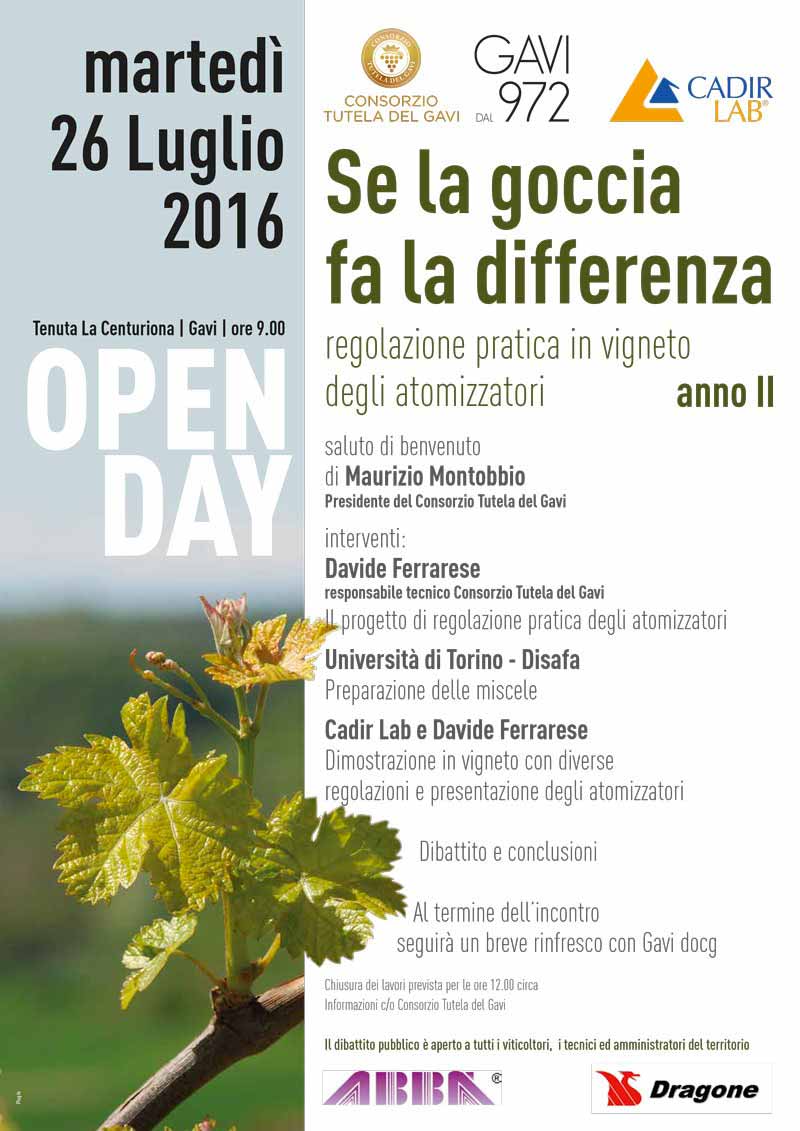
DRAFT
Autochthonous Yeasts 2015
Since the 2015 harvest, the Consortium has launched the Autochthonous Yeast Selection Project, in collaboration with the Italiana Biotecnologie - Enartis laboratory, to increase the viticultural value of Gavi Docg.
The project studied the yeasts present on the grapes, in organic and conventional vineyards, to select those that can best enhance the characteristics of Cortese. In 2015, clusters were taken in each vineyard of the project (9 total vineyards: 3 conventional and 6 organic vineyards) and delivered to the Enartis Laboratory, which is in charge of isolating and preserving yeast strains from fermenting musts, molecular and biological characterization of the isolated strains, oenological tests (fermentative power, production of volatile acidity, SO2 and glycerol) and comparison with commercial dry yeasts.
For the 2016 vintage, two different strains of indigenous yeasts, labeled CTdG12 and CTdG07 from Saccharomyces cerevisiae from samples taken last year and prepared with the contribution of Enartis, were introduced for the first time and tested by some wineries in the Gavi Appellation. As soon as the wines are available, we will conduct a technical test and tasting to verify the compliance of these yeasts.
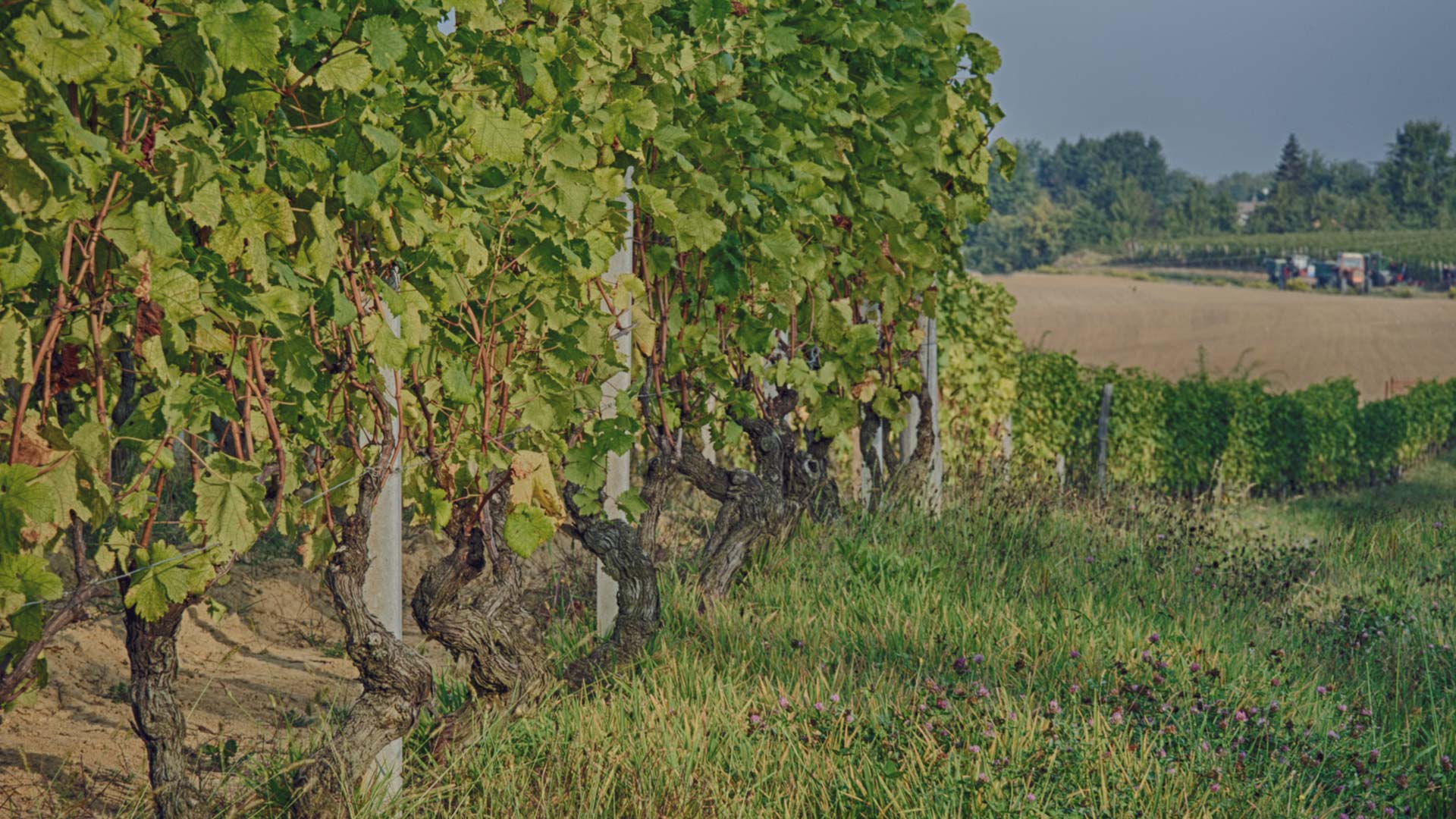
Vintages
Vintage2023
Overall rating: 4.5 stars
Vintage2022
Overall rating: 5 stars
Vintage2021
Overall rating: 5 stars
Vintage2020
Overall rating: 4.5 stars
Vintage2019
Overall rating: 4.5 stars
Vintage2018
Overall rating: 4.5 stars
Vintage2017
Overall rating: 4 stars
Vintage2016
Overall rating: 5 stars
Vintage2015
Overall rating: 5 stars
